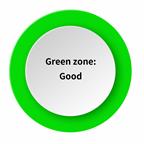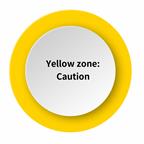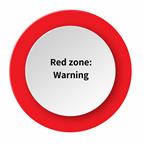ThisisPatientEngagementcontent
Asthma Action Plan, Adult
To download the Ukraine translated version, please click the link below
Follow the plan that you and your health care provider develop. Review your plan with your health care provider at each visit.
Knowing the things that can trigger an asthma attack or make your asthma symptoms worse is very important. Talk to your health care provider about your asthma triggers and how to avoid them. Record your known asthma triggers here: _______________
If you use a peak flow meter, determine your personal best reading. Record it here: _______________
 This zone means that your asthma is under control. You may not have any symptoms while you are in the green zone. This means that you:
This zone means that your asthma is under control. You may not have any symptoms while you are in the green zone. This means that you:Call your health care provider if you are using a reliever or rescue medicine more than 2–3 times a week.
 Symptoms in this zone mean that your condition may be getting worse. You may have symptoms that interfere with exercise, are noticeably worse after exposure to triggers, or are worse at the first sign of a cold (upper respiratory infection). These may include:
Symptoms in this zone mean that your condition may be getting worse. You may have symptoms that interfere with exercise, are noticeably worse after exposure to triggers, or are worse at the first sign of a cold (upper respiratory infection). These may include: Symptoms in this zone mean that you should get medical help right away. You will likely feel distressed and have symptoms at rest that restrict your activity. You are in the red zone if:
Symptoms in this zone mean that you should get medical help right away. You will likely feel distressed and have symptoms at rest that restrict your activity. You are in the red zone if:This information is not intended to replace advice given to you by your health care provider. Make sure you discuss any questions you have with your health care provider.
Cookies are used by this site. To decline or learn more, visit our cookie notice.
Copyright © 2025 Elsevier, its licensors, and contributors. All rights are reserved, including those for text and data mining, AI training, and similar technologies.